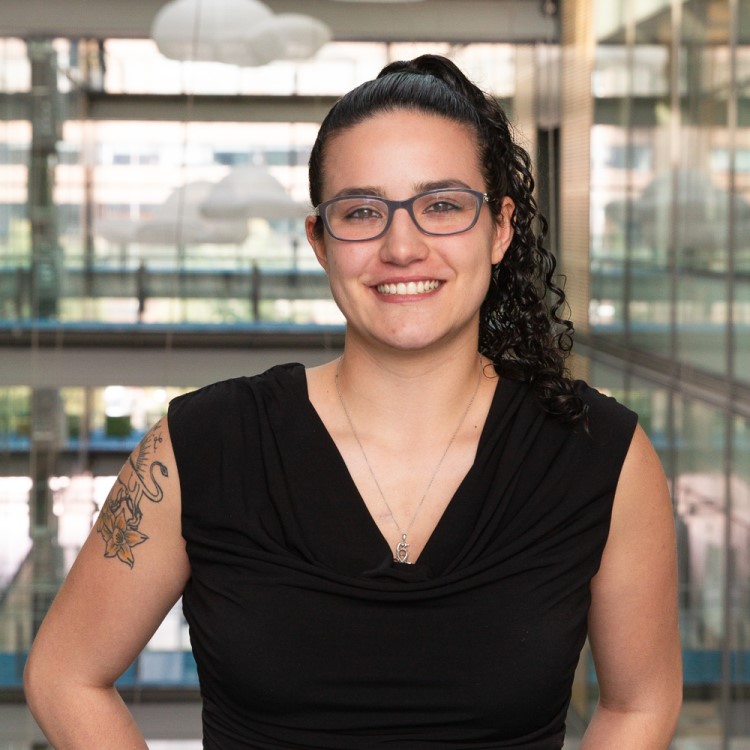EarthWeek Chemsplainer: former postdoc bio-derives building blocks for sustainability
When she was a postdoc in the Chirik Lab, Megan Mohadjer Beromi learned the importance of tying chemistry to practicality. Sustainability is the goal, but the answers have to be economical, a litmus test that Mohadjer Beromi calls “multifaceted sustainability.” Today, as an assistant professor in the Chemistry Department at the United States Naval Academy, Mohadjer Beromi applies that thinking in her research into bioderived materials to advance recyclable plastics.
Now in her third year at the Naval Academy, Mohadjer Beromi is seeing promising results with a plant-based substance called caryophyllene as a building block of polyurethanes. Here’s her take.
Describe your work in sustainability.
My lab’s focus right now is on polyurethanes, a polymer class that is found everywhere. They’re the coatings on your deck, they’re the spray foam for your windows, and there’s a lot of polyurethanes in your car. These polymers are traditionally petrochemically derived and are not inherently degradable. We are aiming to make polyurethanes that are not petrochemically sourced, and are instead made from renewable, natural product building blocks. Also, we are designing these structures to have the ability to be chemically recyclable. By choosing bioderived building blocks, we can address both the chemical recyclability and cost aspects of polyurethane design.

Megan Mohadjer Beromi, former postdoc in the Chirik Lab and now an assistant professor in the Chemistry Department at the United States Naval Academy.
How does this work?
We’re looking at a plant-based natural product called caryophyllene, which comes from clove trees – it is a large component of clove oil and other spices. Caryophyllene is already produced on a massive scale and is incredibly inexpensive. Polymers made from caryophyllene are known, but what we’re trying to do is generate a polymer precursor from caryophyllene that can be a one-to-one replacement for the petrochemical building blocks currently in polyurethanes. An awesome feature of these caryophyllene systems is that they also have functionalities in their structures that make them inherently degradable in polymer systems, which has not been demonstrated before.
So, the goal of my lab is to take these plant-based building blocks, link them together specifically to make polyurethanes, and then prove that they have the same performance metrics as our commodity polyurethanes. And what we’ve seen so far is that these caryophyllene-based precursors absolutely function as a one-to-one replacement.
How do you test the properties?
What we do in our lab is take the petrochemical-based materials and the bio-based materials and pit them head-to-head—our bioderived precursors vs. the petrochemical precursors. In our collaboration with Princeton, the Chirik Lab provides the caryophyllene building blocks and we synthesize the polyurethane polymers from them. We also measure all of the performance metrics at USNA, as well. USNA has an excellent STEM program, so we have a lot of capabilities for testing polymers available to us.
So far, how does it look for this bioderived material?
It looks good – the body of work my students have done so far indicates that our plant-based polyurethanes really do function comparably with materials that are already out there, so they should have some place in the polyurethane world. In terms of recyclability, we’re at a point where we’re trying to optimize depolymerization to obtain the maximum amount of feedstocks from the materials at the end of their life.
How hopeful are you that this research will be one of many solutions for the reduction of plastic waste?
In the realm of plastics, trying to engineer end-of-life disposal into new polymer structures that are being made is definitely something that is very popular right now. But that doesn’t help with the plastic that’s already out there. This is really a two-headed chemistry problem: we need to figure out what to do with the plastic that’s already circulating, but to help us in the future we definitely need to consider the end-of-life fate of these materials before we even make a new plastic structure. That way, we’re not perpetuating the problem.
